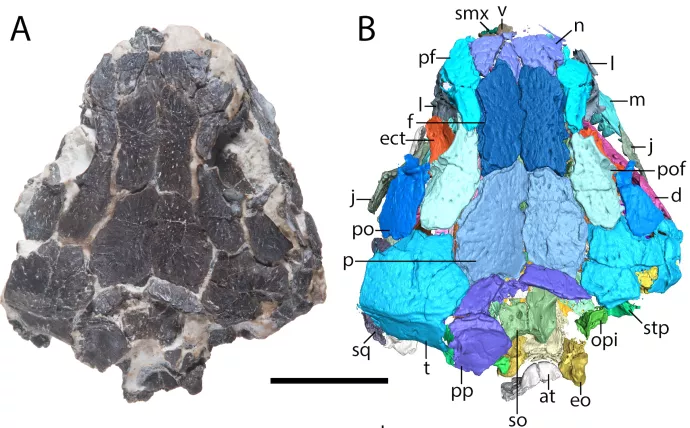
Microsaur? Computed tomographic analysis? Bryan Gee has answers
Computed tomographic analysis of the cranium of the early Permian recumbirostran ‘microsaur’ Euryodus dalyae reveals new details of the braincase and mandible
https://doi.org/10.1002/spp2.1304
" This study is the latest in our collaboration with the Australian Nuclear Science and Technology Organisation where we use neutron computed tomography (nCT) to image the internal anatomy of specimens in great detail, revealing substantial new information about poorly known taxa and poorly known anatomical regions like the braincase. Here we examined a number of specimens of the microsaur Euryodus. Microsaurs are of great import (and controversy) among early tetrapod workers because they have been suggested to be everything from the ancestors of modern amphibians to early reptiles, and they are some of the earliest tetrapods to explore burrowing and fossorial lifestyles. Our study revealed a lot of highly nuanced information; some specimens that look identical on the outside are very different on the inside. Perhaps most significantly, we were able to identify an intriguing feature - multiple tooth rows - never before reported for any microsaur. This represents yet another independent origination of multiple tooth rows among early tetrapods (found in some contemporaneous reptiles) but indicates a more widespread plasticity in processes of tooth replacement and jaw growth that produce this unique apparatus." Bryan Gee, PhD Student, from Prof. Robert Reisz Lab
Paper: https://bit.ly/38Ptmsa
Blog: https://bit.ly/2U1Iaid
